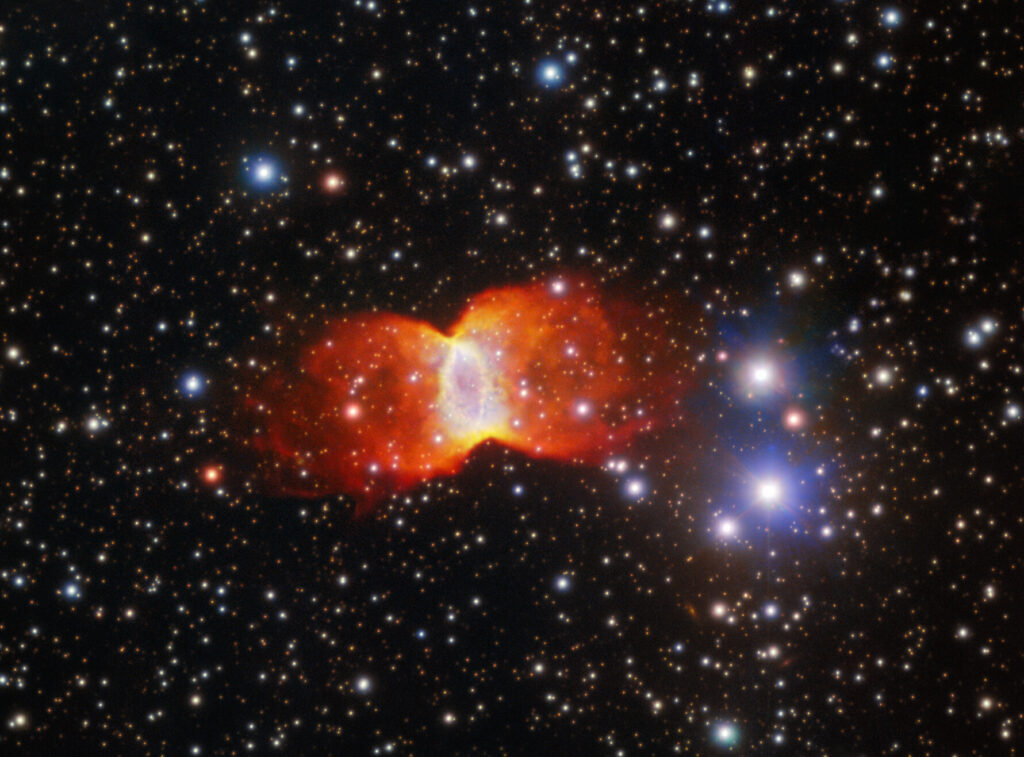Employees of the NOIRLab research center published a photograph taken with the Gemini North telescope. It captures a nebula that resembles a huge space butterfly.

The nebula photographed by Gemini North is known as Kohoutek 3-46. It is located at a distance of 7,200 light-years from Earth toward the constellation Cygnus.
Kohoutek 3-46 is classified as a planetary nebula. The term should not be misleading: planetary nebulae have nothing to do with planets. The name was invented in the 18th century by their discoverer William Herschel due to some resemblance to a planetary disk. Since then, the name has stuck in astronomy.
In fact, planetary nebulae represent the final phase of the life cycle of sun-like stars. They are formed when a luminary that has turned into a red giant begins to shed its outer layers of atmosphere into the surrounding space. Radiation from the exposed nucleus ionizes the shed shell, causing it to glow.
About 10% to 20% of planetary nebulae are bipolar rather than spherical. Kohoutek 3-46 is one of them. There is also a rectangular bipolar nebula in the Milky Way. Astronomers don’t fully know the reason for this variety of shapes. It is most likely related to gravitational interactions of stars in binary systems.
By cosmic standards, the planetary nebula stage is extremely transient. It lasts only a few tens of thousands of years. Over time, the core of the star cools to the point where it no longer emits enough ultraviolet light to ionize the gas envelope. As a result, the nebula becomes invisible. The nucleus turns into a white dwarf. Since Kohoutek 3-46 is estimated to be about 20,000 years old, this means that it has already lived a significant portion of its allotted lifespan and will soon disappear.
According to NOIRLab


